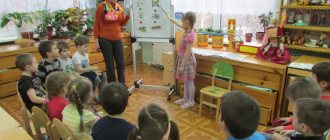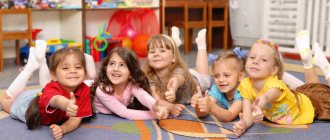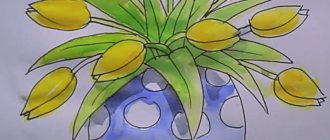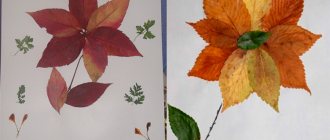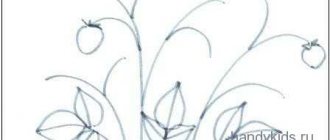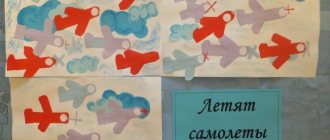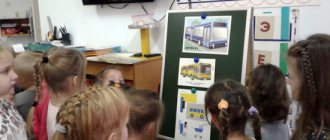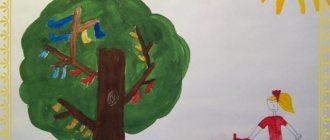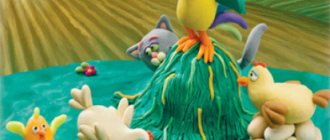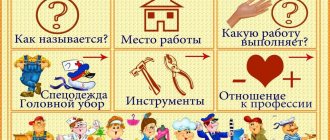Lesson notes
An art lesson on the topic “Soldier on duty” in the senior group of a kindergarten can be timed to coincide with two holidays: February 23 and May 9. In both cases, the main direction is getting to know the Russian Army and the defenders of the Motherland.
Soldier figure
In the methodological manual by T. S. Komarova “Visual activities in kindergarten. Senior group" drawing in the senior group of soldiers at the post is scheduled for February. The book provides the following sample lesson summary:
- Program content. Teach children to create the image of a warrior in a drawing, conveying the characteristic features of costume, pose, and weapons. Strengthen children's ability to place an image on a sheet of paper and draw large. Foster interest and respect for the Russian Army.
- Methodology. Check with the children about the clothes and posture of the border guard or soldier standing at the post.
- Using illustrations, determine the composition of the drawing, drawing techniques with simple and colored pencils. Draw children's attention to careful painting.
- Materials. A simple pencil, colored pencils, 1/2 landscape paper (for each child).
- Connection with other activities. Learning poems, songs, talking with children about the Russian Army.
Note! In May, you can plan to create an invitation for parents to celebrate Victory Day. You can also place a drawing of a soldier on one of the pages of the ticket.
The creation of this invitation can be designed as a project consisting of several stages. Each stage is the design of one page. For example, the first page is an appliqué (as suggested in the manual), the second is an image of a soldier, the third is an image of a military vehicle using the plasticine technique, etc.
The most unusual and very beautiful drawings for May 9th for sketching
If you don’t have any special skills, but your soul requires creative expression, which is especially great when it comes to such bright and patriotic holidays as Victory Day, then you can use the following universal templates for copying or sketching.
If you don’t have enough talent for independent art, you can always use ready-made templates for sketching or copying
Or you can make it even easier by printing a ready-made template and coloring it at your discretion
Our T-34 made a huge contribution to bringing the Great Victory holiday closer! So why not depict this iron hero on paper for the holiday?
Victory Day is an excellent occasion to tell the younger generation about the exploits of our ancestors. Tell them everything you know about this holiday and the events preceding it, and be sure to give the children the opportunity to convey their impressions of what they heard in a drawing.
Lesson Objectives
First of all, you need to decide on the tasks of the NOD: developmental and patriotic-educational.
Plan diagram of a step-by-step drawing of a soldier figure
Educational:
- development of children's creative abilities;
- improving spatial thinking and visual perception;
- strengthening the skill of drawing geometric shapes: rectangle, oval, triangle;
- development of fine motor skills of the hands, consolidation of the skill of neat coloring.
Patriotic-educational - instilling a sense of patriotism through:
- expanding knowledge about the history of Russia and our native land;
- developing a sense of respect for Defenders of the Fatherland, soldiers, border guards;
- instilling a sense of pride in the heroic deeds of participants in military operations.
Kinesiological gymnastics for preschool children
Necessary materials and equipment
Demo material:
- color pictures, clippings, posters with images of soldiers of various troops;
- plan - a diagram of a step-by-step drawing of a soldier's figure. It is better to depict each stage on a separate sheet of A4 format and hang it up for display during the lesson;
- cap (real, not a drawing);
- army belt, shoulder straps.
Handouts (for each child):
- a simple pencil;
- eraser;
- colour pencils;
- album sheet, 1/2.
Important! The teacher will need a computer or laptop with an interactive screen to view the presentation about military professions.
Drawing of Victory Day for school, step by step with photos
Soldier with weapon
- Draw a diagram of the soldier's torso and head on paper.
- Draw the helmet and ears of the man.
- Draw the face.
- Give the correct curves to the body by drawing the neck and upper limbs.
- Draw the lower limbs.
- Add small details to the soldier's silhouette.
- Complete the weapon and color the drawing.
St. George ribbon
- Draw two lines that are parallel to each other. Cross them with the same lines.
- Connect the top line with a semi-oval, the bottom lines - according to the figure. Erase the excess.
- Draw black stripes along the entire length of the ribbon.
- Paint the rest of the space on the tape orange.
Congratulatory drawing
- Draw a rectangle, inside it is an oval and several lines.
- Give volume to the rectangle, draw springs at the top, and the St. George ribbon at the bottom. On the sides are the bases of flower stems.
- Add volume to the stems and draw cups of carnations.
- Draw the flowers.
- Add a caption to the picture.
- Add color to your greeting design.
For Victory Day
- Draw a figure like in the picture.
- Draw a line under the figure, which will then turn into a twig.
- Draw lines inside the geometric one from the center to the corners. Complete the star. Erase the extra lines.
- Draw leaves on the branch.
- Add the St. George's ribbon to the left of the picture.
- Finish the drawing by adding lettering and adding color to the drawing.
9th May
- Draw a three-dimensional number “nine”.
- Draw leaves on the sides of the number.
- Above the number, add three auxiliary ovals to draw the stars.
- Draw three three-dimensional stars inside each oval, connect them with the number “nine”. Erase the extra outlines of the ovals with an eraser.
- Add the word “May” after nine in block letters and complete the details.
Drawing “Soldier on duty”: senior group, lesson stages
Preliminary work in this lesson is aimed at patriotic education of preschool children, as well as motivation to create a drawing. This could be reading poems on a military theme and works in prose. The analysis of Russian folk proverbs solves patriotic and educational problems well:
- As a Russian takes a bayonet, so the enemy shakes,
- Russians don’t joke with rolls or swords,
- Russian soldier knows no barriers,
- The whole world knows: there is no stronger soldier than ours.
Note! The most complete picture of the Russian Armed Forces is given by an oral history of military professions with the display of illustrations or viewing of a presentation.
Schematic drawing of a cap
For your information! Types of military professions: border guards, tank crews, artillerymen, signalmen, sailors, pilots, submariners, paratroopers, sappers, snipers.
Before the next stage of the lesson, a physical education session on a military theme is held.
In the main part of the GCD, the task is announced (to draw a soldier at a post) and methods of action are shown. It is necessary to analyze the soldier, to make out what geometric figure each part of the body resembles: the head is an oval, the torso is a rectangle, the legs and arms are elongated rectangles.
Important! Before you start working, you need to remind the children that you should press lightly on a simple pencil, the lines should be thin, barely noticeable. This is done to make it easier to erase inaccuracies with an eraser.
Drawing the features of a military suit
Drawing step by step:
- Outline the location of the future soldier in the center of the sheet. Just above the middle of the page, draw an oval, a small neck and a rectangular torso.
- Draw the legs and then the arms.
- Examine the cap, analyze the shape, draw a triangle, erase the extra lines.
- Draw the details: weapons, belt, shoulder straps, buttons, pockets, boots, star on the cap.
- Draw facial features. Acquaintance with portraiture as a genre of painting is carried out in previous classes (portrait of father, mother, friend). At this stage, only consolidation of the material covered occurs.
- Coloring the finished image with colored pencils according to the sample.
Scheme for drawing a face
Important! It is worth recalling the rule of coloring with a pencil: painting within one contour occurs in one direction (top-to-bottom, left-to-right or oblique).
Drawing “Icicles are crying” - spring theme for younger groups
During the lesson it is worth using the traditional technique of drawing with pencils, since the topic is already quite complex.
Children's drawings of Victory Day in kindergarten, ideas step by step
Red Star
- Using a pencil and ruler, draw an angle following the drawing.
- Draw another corner like in the picture.
- Connect the end of the segment to make a star.
- Erase any excess lines in the center with an eraser.
- Color the drawing.
Soldier
- Draw a circle with a small rectangle underneath it. Connect.
- Add legs to the soldier as in the picture.
- Draw two hands.
- Design the face, small details, color the drawing.
St. George Ribbon
- Draw the bend of the ribbon.
- Duplicate the resulting bend five times.
- Mark the tip of the tape and the fold line.
- Remove unnecessary lines.
- Add color to the ribbon.
Fireworks
- Draw a point in the center and curved lines coming from it.
- Gradually add lines, using different colors to make them more saturated.
Carnation
- Draw the stem with the base of the bud.
- Add leaves and petals.
- Draw in the details.
- Color the stem and leaves green and the petals red.
Techniques and techniques
It is still difficult for preschoolers 4-5 years old to draw straight lines and large rectangular objects, so it is advisable to draw in the middle group of soldiers using an unconventional technique. Thus, even in the absence of well-developed drawing skills, kids will receive satisfaction from the result of their work.
Cotton swabs
Handouts for each child: stencil (template) of a soldier’s silhouette, brown and green paints, cotton swabs.
Progress of work: applying multi-colored spots with cotton swabs to imitate the protective coloring of the form.
Protective coloring of border guard clothes
In move
Drawing a soldier in the preparatory group step by step has its own characteristics. The difficulty is that the person needs to be conveyed in motion. To make it easier to convey the position of the arms and legs when walking or running, a child is called in to help. He takes the desired position, and the other children watch him. You can also offer diagrams of a person in motion.
Since children of older preschool age already have well-developed hand coordination, they easily use not only pencils, but also practice different ways of working with a brush.
Note! Children's works can be combined into a common composition “Our Army” by adding images on the theme “Military Equipment”.
Schematic representation of poses
Analysis of the resulting works
The final stage of the lesson is analysis of the drawings with the children:
- What do you like about your drawings and those of your friends?
- what was the most difficult?
- what can you add to the background?
Important! To reinforce the patriotic theme, new concepts and words, you can play the didactic game “Get a ring - say a word.”
Work on honing human drawing skills, as can be seen, is carried out purposefully throughout the entire development process of preschoolers. In parallel and in a complex manner, additional educational and educational tasks are solved in accordance with the standards of preschool education. The main thing is to draw up a detailed outline of the lesson and clearly outline the stages of drawing.
